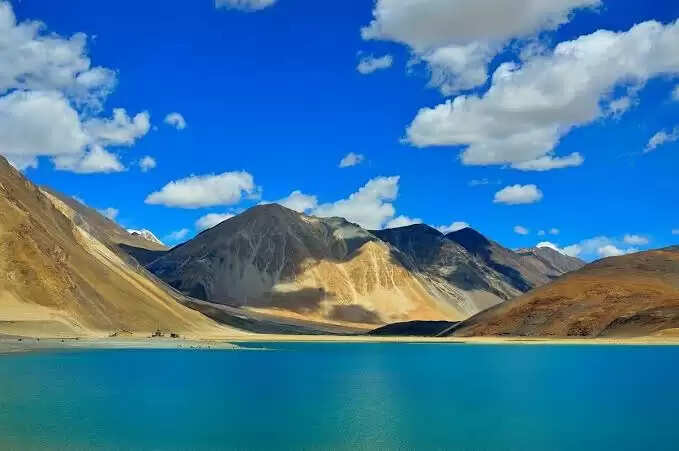Top 10 Lakes In Ladakh

Leh Ladakh, a name that conjures images of towering high-altitude mountains, expansive cold, arid deserts adorned by the meandering Indus River, and a vibrant Tibetan-Buddhist culture, is a magnet for countless travelers each year. However, Leh Ladakh is not only renowned for these aspects; it is also graced with some of the most captivating high-altitude lakes that gleam like precious gems when viewed from afar. These lakes, with their unique colors, elevated locations, sizes, and associated tales, are a must-visit on your Ladakh itinerary. If you're contemplating a journey to Leh Ladakh and its enchanting lakes, peruse our Leh Ladakh tour packages to embark on your ultimate adventure.
Here are some of the lakes in Leh Ladakh that every traveler should have the opportunity to discover:
1. Pangong Tso

Thanks to its appearance in the movie '3 Idiots,' Pangong Tso has become one of Leh Ladakh's most iconic tourist destinations. This Ladakh lake, situated at an altitude of 4,300 meters, extends across three regions: India, China, and Tibet. It is famed for its distinctive turquoise hue, which exhibits varying shades at different angles. Access to Pangong Tso can be gained via two routes, with the most popular being through the challenging Khardung La pass.
2. Tso Moriri
Nestled in eastern Ladakh, Tso Moriri is another captivating lake known for its stunning colors, seclusion, and towering mountains that reach over 6,000 meters on both its eastern and western flanks. It stands at an elevation of 4,522 meters and is associated with local legends, including a belief that the lake is cursed, preventing the nearby village of Korzok from using its waters.
3. Kyagar Tso
Kyagar Tso, a small saline lake situated at an altitude of 4,705 meters, is found near Tso Moriri. It boasts a stark, barren landscape with minimal population or vegetation. Accessible through a rugged road, this area presents a challenging environment with fluctuating weather conditions.
4. Tso Kar
Located in southern Ladakh within the Rupshu valley, Tso Kar is often referred to as the 'White Desert' due to the salt deposits along its banks. It stands at an elevation of 4,660 meters and is distinguished by the presence of marshland, making it a haven for diverse wildlife, including black-necked cranes, Brahmi ducks, and ibex.
5. Yaye Tso
Yaye Tso, a volcanic lake perched at an extreme altitude of 4,988 meters, is characterized by its barren surroundings. The nearest road head to this lake is Mahe, located 12 kilometers away. The harsh weather conditions and limited amenities make visiting this remote lake a challenging endeavor.
6. Chilling Tso
Chilling Tso, though not the most well-known, stands as one of the highest-altitude lakes in the world, situated at 4,900 meters above sea level. It shares its vicinity with another scenic Ladakh lake, Ryul lake, often referred to as the 'twin lakes.' Traveling in groups is advisable, as this remote location may lack immediate assistance in case of emergencies.
7. Spanggur Tso
Spanggur Tso, unique in its own right, is not easily accessible to tourists due to the absence of a motorable road. This lake, positioned at an altitude of 4,305 meters, was wholly within India before the 1962 India-China war, debunking the notion that Pangong Tso is the only lake shared by both countries.
8. Chagar Tso
Chagar Tso, often overshadowed by Pangong Tso, is equally captivating and less crowded. Located just 20 kilometers before Pangong Tso, it offers similar scenic beauty with a more tranquil atmosphere. A special permit is required when visiting from Hanle.
9. Yarab Tso
Yarab Tso, a serene high-altitude lake near Nubra Valley, provides an idyllic setting for those seeking peace and tranquility. With crystal-clear waters and breathtaking surroundings, this lake is a haven for photography enthusiasts.
10. Mirpal Tso
Mirpal Tso, an offbeat gem in Ladakh, remains less frequented by tourists. Situated in Chushul, reaching this lake requires a four-hour drive through the challenging Kaksang La pass. It stands at an altitude of 4,305 meters and was once entirely within India before the 1962 India-China war.
These Leh and Ladakh lakes typically freeze during the winter months, making June to October the best time to visit. Adequate preparation, including carrying extra fuel for personal vehicles, is essential due to the remote and rugged terrain. Some isolated lakes require permits, obtainable from the tourism office in Leh. For safety reasons, especially at night, it is advisable to travel in groups.

